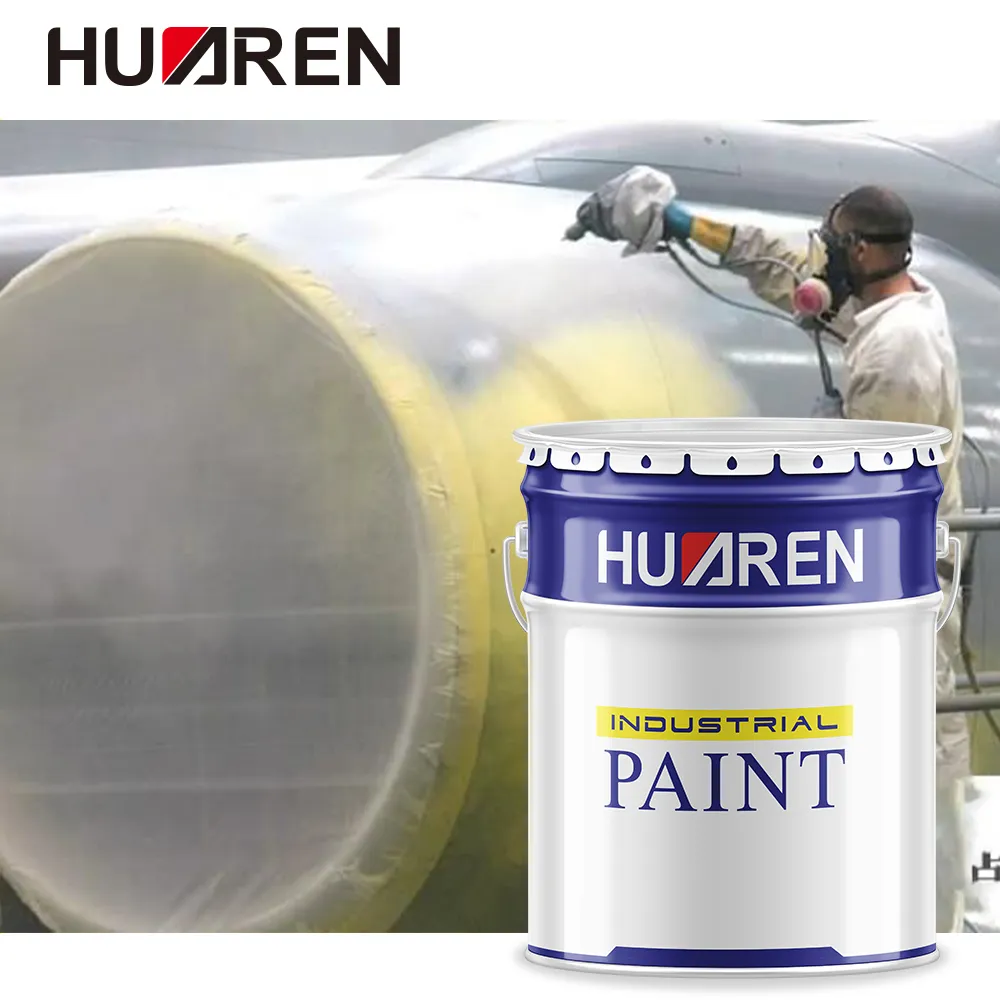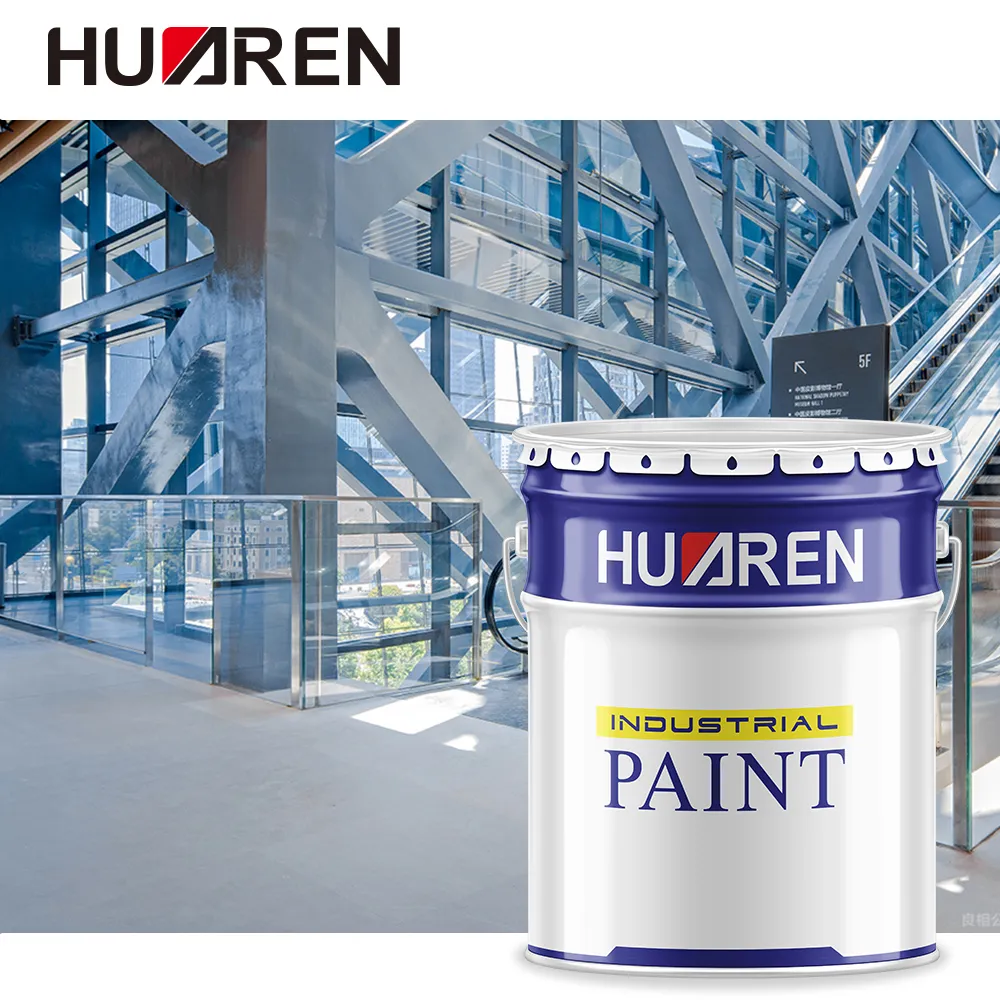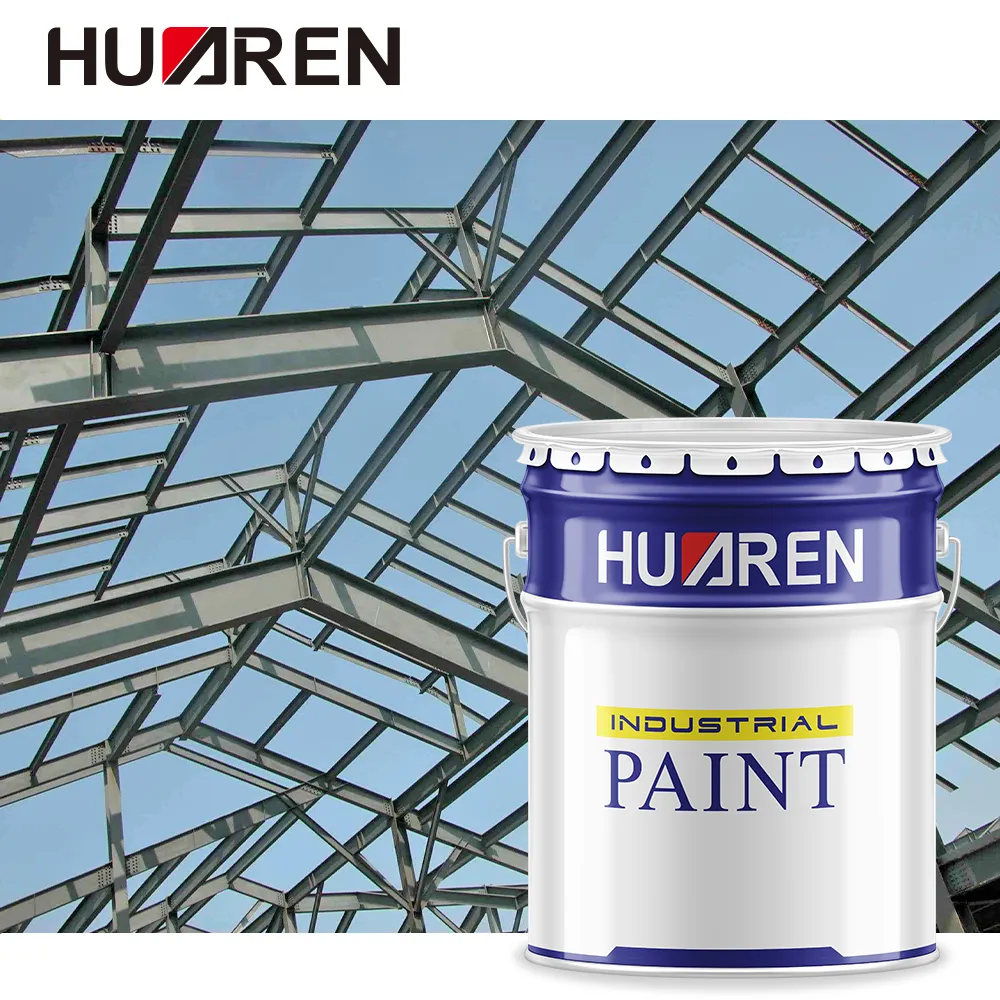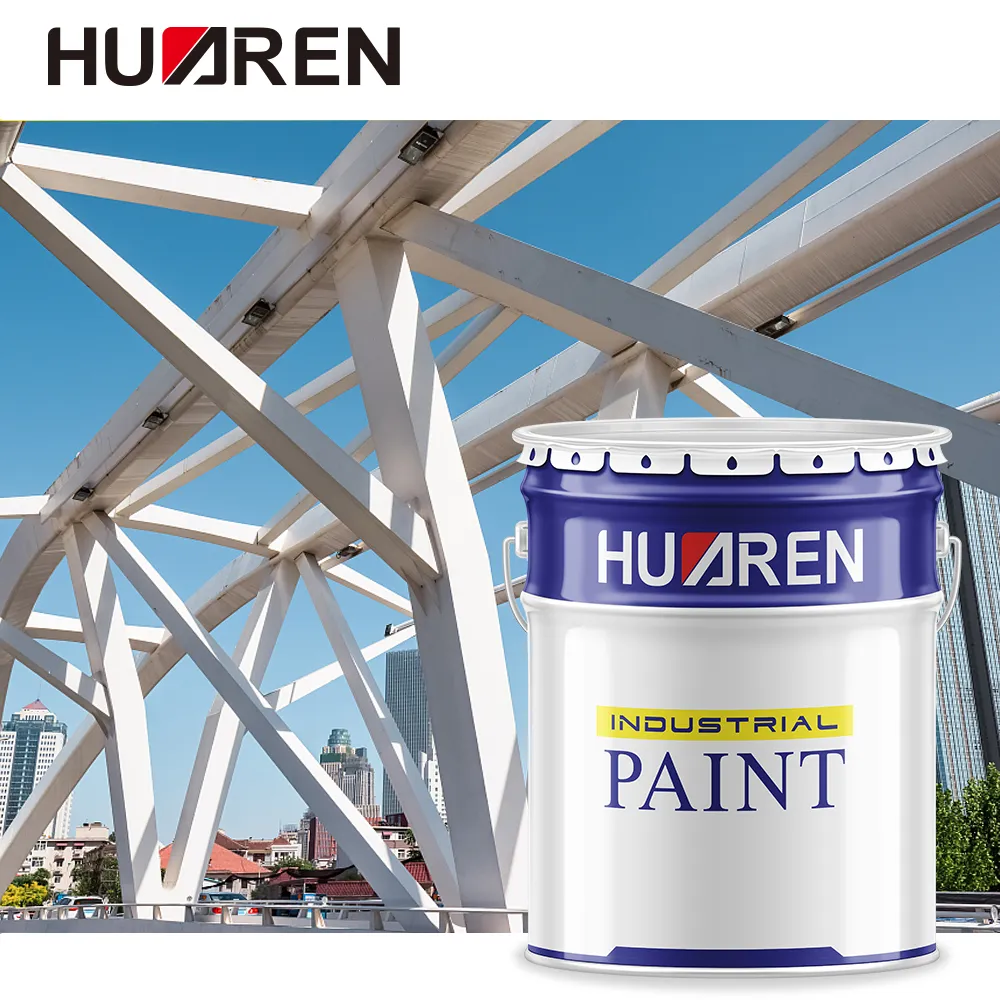As an important part of modern buildings and industrial facilities, steel structure is widely used in bridges, high-rise buildings, industrial plants and other fields due to its excellent bearing capacity and durability. However, when steel structure is exposed to the atmospheric environment for a long time, it is susceptible to oxidation, corrosion and other effects, resulting in a decrease in structural strength and a shortened service life.
Therefore, it is crucial to adopt appropriate protective measures. As a high-performance protective coating, fluorocarbon paint for steel structure has become the first choice for surface protection of steel structure due to its excellent weather resistance, corrosion resistance and decorative effect.
This article will introduce in detail the definition, construction process and coating thickness requirements of fluorocarbon paint for steel structure.

What is Fluorocarbon Paint for Steel Structure?
Fluorocarbon paint for steel structure is a coating with fluorocarbon resin as the main film-forming substance. Fluorocarbon resin, especially polyvinylidene fluoride (PVDF), contains strong fluorocarbon bonds in its molecular structure, so fluorocarbon coatings are far more weather-resistant, acid-resistant, alkali-resistant, corrosion-resistant and have a low friction coefficient, and are also excellent in water-repellent, oil-repellent and pollution-resistant than ordinary coatings. Therefore, it is widely used on large outdoor metal steel structures. Fluorocarbon paint for steel structures is mainly used to protect the surface of steel structures to prevent them from corrosion and aging in harsh environments.
The main ingredients of fluorocarbon paint for steel structures include:
● Fluorocarbon resin: As a film-forming substance for the coating, it provides basic properties of the coating, such as weather resistance, corrosion resistance and gloss.
● Pigments and fillers: Give the coating color and certain physical properties, such as wear resistance, hiding power and mechanical strength.
● Additives: Improve the construction performance and final performance of the coating, such as leveling agents, defoamers and UV absorbers.
● Solvents: Help the coating maintain appropriate viscosity and fluidity during construction, which is convenient for spraying or brushing.

What is the construction process of fluorocarbon paint for steel structures?
The fluorocarbon resin in fluorocarbon paint contains a carbon-fluorine bond molecular structure. Because the carbon-fluorine bond length is short, fluorocarbon spraying follows a certain construction process: substrate treatment-paint mixing-primer coating-intermediate coating-topcoat coating-project acceptance.
The above matching is to use the decorative effect, shielding effect, corrosion inhibition effect and cathodic protection effect of each coating to achieve the purpose of anti-corrosion decoration for more than 20 years.
Construction process requirements of fluorocarbon paint for steel structure:
1. Construction environment
The ambient temperature should be maintained at 10 to 35℃, the relative humidity should be 40% to 70%, no wind and sand, dust, and avoid rain within 24 hours of construction; if the requirements are not met, construction cannot be carried out, or a local suitable environment should be created for construction.
2. Substrate treatment
For the surface treatment of steel, sandblasting is required to remove rust and impurities on the surface, so that the substrate has a better roughness, generally requiring 30-70μm, which is more conducive to the adhesion of primer. In addition, oil stains need to be removed. The common methods are solvent scrubbing and water washing. The surface treatment is required to meet the Sa2.5 standard.
3. Primer construction
After the surface treatment of the steel structure is completed, primer needs to be applied to enhance the adhesion between the fluorocarbon paint and the steel and provide additional anti-corrosion protection. Epoxy zinc-rich primer or epoxy iron red primer is usually used, and the construction ratio of epoxy zinc-rich primer to curing agent is 8 to 1. Thinner 10%, filter with 200 mesh gauze, and the thinner must be stirred continuously during placement to avoid precipitation; Construction requirements: spray once, film thickness 50~60 microns, no leakage and no sagging. After the primer is completed, it needs to be dried under well-ventilated conditions, usually about 24 hours, depending on the type of primer and ambient temperature.
4. Drying, repairing putty, polishing
After drying for 24 hours, fill holes or obvious depressions with atomic putty to fill gaps and micropores. After drying, use sandpaper to polish the patched part until it meets the requirements, and spray with epoxy zinc-rich primer. After drying, use 240# sandpaper to polish until the surface is flat and smooth.
5. Intermediate paint construction
Intermediate paint is mainly used to increase the coating thickness, improve the overall anti-corrosion performance, and provide a better adhesion basis for fluorocarbon paint. Usually, epoxy micaceous iron intermediate paint is selected. The ratio of intermediate paint to curing agent is 8:1: thinner 10%; quality control: spray twice, the paint film thickness is 100~120 microns, no dripping, sagging, uniform color and gloss. If there are knife marks and bee eyes, use polishing putty to fill, then polish, and then use paint to spray and repair, and finally use 360# or above sandpaper to sand. The coating surface should be smooth, without dust and various residues. The intermediate paint needs to be fully dried, generally more than 24 hours.
6. Fluorocarbon paint construction
The ratio of fluorocarbon paint to curing agent is 20 to 4, that is, 5:1: thinner 10%, and the coating is applied twice. The film thickness is 35~40 microns, the color and gloss are uniform, there is no color difference, and there is no missing coating and sagging on the surface.
7. Spraying fluorocarbon topcoat varnish
The topcoat is the outermost layer of the entire coating system, which is directly exposed to the atmospheric environment and plays a decorative and final protective role. If necessary, you can spray the clear varnish with an electronic scale in the ratio of A: B: thinner = 10: 1.2: 1~3. After one coat, the film thickness is 15~25μm, the color and gloss are uniform, and there is no missing coating, sagging, etc. When applying the topcoat, rainy days and strong winds should be avoided. The ambient temperature should be above 5℃ and the relative humidity should be less than 85% to ensure the quality of the coating. The drying time of the topcoat is usually 24-48 hours, and it takes about 7 days to fully cure.

What is the coating thickness of fluorocarbon paint for steel structures?
| NO | Coating system | Name | Technical requirements | Reference dosage (kgm2) |
| 1 | Steel surface pretreatment | Sandblasting | Sa2.5 | 0.3 |
| 2 | Anticorrosive primer | Epoxy zinc-rich primer | Dry film thickness ≥50-70um | 0.3> |
| 3 | Anticorrosive shade layer | Epoxy micaceous iron intermediate paint | Dry film thickness ≥50-70um | 0.2 |
| 4 | Fluorocarbon color topcoat | Fluorocarbon topcoat | Dry film thickness ≥20-30um | 0.125 |
| 5 | Fluorocarbon varnish | Dry film thickness ≥10-15um | ||
| 6 | Auxiliary materials | Curing agent, diluent, etc. | Appropriate amount |
1. Requirements for coating thickness
Coating thickness is one of the important indicators for measuring the construction quality of fluorocarbon paint for steel structures. Different steel structure environments and protection requirements have different regulations on coating thickness. The commonly recommended coating thickness is as follows:
● Primer coating thickness: generally between 50-80 microns.
● Intermediate paint coating thickness: usually 100-150 microns.
● Topcoat coating thickness: The single-layer coating thickness should be 40-60 microns, and the total thickness of two-layer construction should be between 80-120 microns.
2. Coating thickness measurement
In order to ensure that the coating thickness meets the design requirements, thickness measurement and quality control are required during the construction process.
● Measuring tools: Commonly used measuring tools include wet film thickness gauges and dry film thickness gauges.
● Measurement frequency: After each construction is completed, a certain number of points should be randomly selected for measurement to ensure that the coating thickness is uniform and meets the standards.
● Recording and acceptance: The measurement data should be recorded for use during acceptance, and the construction process should be adjusted according to actual conditions.

Summary
Steel structure fluorocarbon paint has become an important means of modern steel structure protection due to its excellent weather resistance, corrosion resistance and decorative effect. In actual construction, strictly following the construction process of surface treatment, primer, intermediate paint and topcoat, and reasonably controlling the coating thickness are the key to ensuring the quality and service life of the coating.
Through the introduction of this article, readers should have a clear understanding of the definition of steel structure fluorocarbon paint, construction process and coating thickness requirements. For professionals engaged in steel structure protection projects, mastering this knowledge can not only improve construction quality, but also help ensure the long-term stability and safety of steel structures in various harsh environments.

